Craniopharyngioma differential diagnosis: Difference between revisions
No edit summary |
Ahmed Younes (talk | contribs) |
||
| Line 28: | Line 28: | ||
*'''Intracranial [[teratoma]]''' | *'''Intracranial [[teratoma]]''' | ||
**Presence of fat is helpful, but requires fat saturated sequences or CT to confirm | **Presence of fat is helpful, but requires fat saturated sequences or CT to confirm | ||
Craniopharyngioma must be differentiated from other causes of diabetes insipidus. | |||
{| class="wikitable" | |||
!Type of DI | |||
!Subclass | |||
!Disease | |||
!Defining signs and symptoms | |||
!Lab/Imaging findings | |||
|- | |||
| rowspan="5" |Central | |||
| rowspan="3" |Acquired | |||
|[[Histiocytosis]] | |||
| | |||
* Bone lysis and [[Bone fracture|fracture]] | |||
* Purulent [[otitis media]] | |||
* [[Diabetes insipidus]] and delayed puberty | |||
* [[Maxillary]], [[mandibular]], and [[gingival]] disease | |||
* [[Rash]] and [[Erythematous|maculoerythematous]] skin lesions | |||
* Scaly, [[erythematous]] scalp patches | |||
* [[Lung]] involvement | |||
* [[GI bleeding]] | |||
* [[Lymphadenopathy|Lymph node enlargement]]<ref name="pmid1340034">{{cite journal| author=Ghosh KN, Bhattacharya A| title=Gonotrophic nature of Phlebotomus argentipes (Diptera: Psychodidae) in the laboratory. | journal=Rev Inst Med Trop Sao Paulo | year= 1992 | volume= 34 | issue= 2 | pages= 181-2 | pmid=1340034 | doi= | pmc= | url=https://www.ncbi.nlm.nih.gov/entrez/eutils/elink.fcgi?dbfrom=pubmed&tool=sumsearch.org/cite&retmode=ref&cmd=prlinks&id=1340034 }} </ref> | |||
| | |||
* CD1a and CD45 + | |||
* Interleukin-17 (ILITA) | |||
[[Image:Langerhans Skull X ray.jpg|center|300px|thumb|Skull x-ray of a patient with Langerhan's histiocytosis showing lytic lesions - Case courtesy of Dr Hani Salam, Radiopaedia.org, rID: 9459]] | |||
|- | |||
|[[Craniopharyngioma]] | |||
| | |||
* [[Headache]] | |||
* [[Endocrine disorders|Endocrine dysfunction]] | |||
** [[Diabetes insipidus]] | |||
** [[Hypothyroidism]] | |||
** [[Adrenal failure]] | |||
** [[Diabetes insipidus]] (e.g., excessive fluid intake and urination) | |||
** Growth failure and [[delayed puberty]] | |||
| | |||
* [[Suprasellar]] calcified cyst on [[MRI]] | |||
[[Image:Craniopharyngioma-papillary-1.jpg|center|300px|thumb|Brain MRI showing suprasellar mass consistent with the diagnosis of craniopharyngioma - Case courtesy of A.Prof Frank Gaillard, Radiopaedia.org, rID: 16812]] | |||
|- | |||
|[[Sarcoidosis]] | |||
| | |||
* Systemic complaints | |||
** [[Fever]] | |||
** [[Anorexia]] | |||
** [[Arthralgias]] | |||
* Pulmonary complaints | |||
** [[Dyspnea on exertion]] | |||
** [[Cough]] | |||
** Chest pain, | |||
** [[Hemoptysis]] (rare) | |||
* [[Diabetes mellitus]] | |||
| | |||
* [[Hypercalcemia]] | |||
* [[Hypercalciuria]] ([[Granulomas|noncaseating granulomas]]) | |||
* Elevated [[alkaline phosphatase]] | |||
* [[Serum amyloid A]] (SAA) | |||
* [[Angiotensin-converting enzyme|ACE]] levels may be elevated | |||
[[Image:Neurosarcoidosis.jpg|center|300px|thumb|Contrast-enhanced patches in a patient previously diagnosed with lung sarcoidosis - Case courtesy of A.Prof Frank Gaillard, Radiopaedia.org, rID: 10930]] | |||
|- | |||
| rowspan="2" |Congenital | |||
|[[Hydrocephalus]] | |||
| | |||
* Cognitive deterioration | |||
* [[Headaches]] | |||
* [[Neck pain]] | |||
* [[Blurred vision]] | |||
* [[Unsteady gait]] | |||
* [[Incontinence]] such as [[polyuria]] | |||
|Dilated [[ventricles]] on [[Computed tomography|CT]] and [[Magnetic resonance imaging|MRI]] | |||
[[Image:Obstructive-hydrocephalus.jpg|center|300px|thumb|Obstructive hydrocephalus showing dilated lateral ventricles - Case courtesy of Dr Paul Simkin, Radiopaedia.org, rID: 30453]] | |||
|- | |||
|[[Wolfram syndrome|Wolfram Syndrome]] (DIDMOAD) | |||
| | |||
* [[Diabetes insipidus|Diabetes Insipidus]] | |||
* [[Diabetes mellitus|Diabetes Mellitus]] | |||
* [[Optic atrophy|Optic Atrophy]] | |||
* [[Deafness]] | |||
| | |||
* Negative [[islet cell]] antibodies | |||
* [[Optic atrophy]] on [[electroretinogram]] | |||
* [[Deafness]] on [[audiogram]] | |||
* [[Atrophy]] of brain stem on [[Magnetic resonance imaging|MRI]] | |||
|- | |||
| rowspan="5" |[[Nephrogenic diabetes insipidus|Nephrogenic]] | |||
| rowspan="5" |[[Acquired disorder|Acquired]] | |||
|Drug-induced ([[demeclocycline]], [[lithium]]) | |||
| | |||
* [[Polyuria]] | |||
* [[Polydipsia]] | |||
* [[Nocturia]] | |||
| | |||
* [[Urine osmolality]] <100 mmol/ | |||
* [[Arginine vasopressin]] level >4.6 pmol/ | |||
* Little or no response to administration of exogenous [[arginine vasopressin]] | |||
|- | |||
|[[Hypercalcemia]] | |||
| | |||
* [[Polyuria]] | |||
* [[Polydipsia]] | |||
* [[Gastrointestinal]] disturbances | |||
* [[Bone fracture|Pathological fractures]] | |||
* [[Confusion]] | |||
* [[Palpitations]] and [[cardiac arrhythmias]] | |||
| | |||
* Ca levels greater than 11 meq/L | |||
|- | |||
|[[Hypokalemia]] | |||
| | |||
* [[Polyuria]] | |||
* [[Hyporeflexia]] | |||
* [[Palpitations]] and [[cardiac arrhythmias]] | |||
| | |||
* K levels less than 3meq/L on CBC | |||
|- | |||
|[[Multiple myeloma]] | |||
| | |||
* Pathologic [[bone fractures]] | |||
* [[Bleeding]] | |||
* [[Hypercalcemia]] leading to [[polyuria]] | |||
* [[Infection]] | |||
* [[Hyperviscosity]] | |||
* [[Anemia]] | |||
| | |||
* [[IgG]] or [[IgA]] spike on [[serum protein electrophoresis]] | |||
* [[Monoclonal antibody|Monoclonal M spike]] | |||
* Disordered [[plasma cell]] proliferation on [[bone marrow biopsy]] | |||
[[Image:Multiple-myeloma-skeletal-survey.jpg|center|300px|thumb|Skeletal survey in a patient with multiple myeloma showing multiple lytic lesions - Case courtesy of A.Prof Frank Gaillard, Radiopaedia.org, rID: 7682]] | |||
|- | |||
|[[Sickle-cell disease|Sickle cell disease]] | |||
| | |||
* [[Chronic pain]] | |||
* [[Anemia]] | |||
* [[Aplastic crisis]] | |||
* Splenic sequestration | |||
* [[Infection]] | |||
* [[Isosthenuria]] presenting with [[polyuria]] | |||
| | |||
* [[Hemoglobin]] level is 5-9 g/dL | |||
* [[Hematocrit]] is decreased to 17-29% | |||
* [[Peripheral blood smear|Peripheral blood smears]] demonstrate [[Target cell|target cells]], elongated cells, and characteristic sickle erythrocytes | |||
* MRI can demonstrate [[avascular necrosis]] of the [[femoral]] and [[humeral]] heads | |||
[[Image:Sickle cells.jpg|center|300px|thumb|Blood film showing the sickle cells - By Dr Graham Beards - Own work, CC BY-SA 3.0, https://commons.wikimedia.org/w/index.php?curid=18421017]] | |||
|- | |||
| colspan="2" |Primary polydipsia | |||
|[[Psychogenic]] | |||
| | |||
* [[Polyuria]] | |||
* [[Polydipsia]] | |||
* [[Nocturia]] | |||
| | |||
* Dry mucus membrane | |||
* History of [[psychiatric disorders]] | |||
|- | |||
| colspan="3" |Gestational diabetes insipidus | |||
| | |||
* [[Polyuria]] | |||
* [[Polydipsia]] | |||
* [[Nocturia]] | |||
* [[Pregnancy]] | |||
| | |||
* Dry mucus membranes | |||
* [[Pregnancy]] | |||
|- | |||
| colspan="3" |[[Diabetes mellitus]] | |||
| | |||
* [[Polyuria]] | |||
* [[Polydipsia]] | |||
* [[Nocturia]] | |||
* [[Weight gain (patient information)|Weight gain]] | |||
| | |||
* Elevated blood sugar levels >126 | |||
* Elevated [[HbA1c]] > 6.5 | |||
|} | |||
==References== | ==References== | ||
Revision as of 15:53, 17 October 2017
|
Craniopharyngioma Microchapters |
|
Diagnosis |
|---|
|
Treatment |
|
Case Studies |
|
Craniopharyngioma differential diagnosis On the Web |
|
American Roentgen Ray Society Images of Craniopharyngioma differential diagnosis |
|
Risk calculators and risk factors for Craniopharyngioma differential diagnosis |
Editor-In-Chief: C. Michael Gibson, M.S., M.D. [1]Associate Editor(s)-in-Chief: Sujit Routray, M.D. [2]
Overview
Craniopharyngioma must be differentiated from other pituitary masses such as sarcoid, pituitary adenoma, aneurysm, teratoma, tuberculosis, rathke cleft cyst, chordoma, hypothalamic glioma, hamartoma of tuber cinereum, histiocytosis, meningioma and optic nerve glioma.
Differentiating Craniopharyngioma from other Diseases
Craniopharyngioma is a mass in the pituitary region. A simple and popular mnemonic to remember the common pituitary masses that can be confused with craniopharyngioma is SATCHMO.[1]
- S: Sarcoid, sellar tumour (pituitary adenoma)
- A: Aneurysm
- T: Teratoma or tuberculosis (and other granulomatous diseases)
- C: Cleft cyst (Rathke), chordoma
- H: Hypothalamic glioma, hamartoma of tuber cinereum, histiocytosis
- M: Meningioma, metastasis
- O: Optic nerve glioma
General imaging differential considerations include:
- Rathke cleft cyst
- No solid or enhancing component
- Calcification is rare
- Unilocular
- Majority are completely or mostly intrasellar
- Pituitary macroadenoma (with cystic degeneration or necrosis)
- Can look very similar
- Usually has intrasellar epicentre with pituitary fossa enlargement rather than suprasellar epicentre
- Despite occasional presence of T1 bright cystic regions, calcification in these cases is often absent (whereas most adamantinomatous craniopharyngiomas are calcified)
- Intracranial teratoma
- Presence of fat is helpful, but requires fat saturated sequences or CT to confirm
Craniopharyngioma must be differentiated from other causes of diabetes insipidus.
| Type of DI | Subclass | Disease | Defining signs and symptoms | Lab/Imaging findings |
|---|---|---|---|---|
| Central | Acquired | Histiocytosis |
|
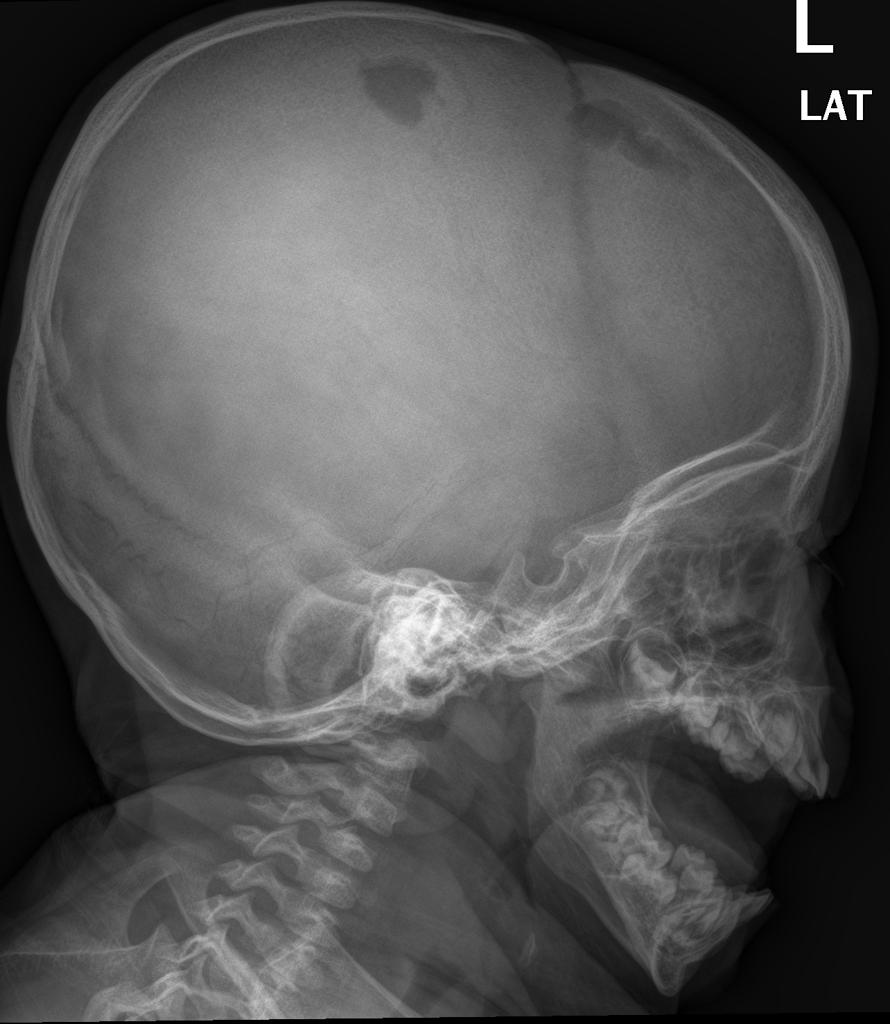 |
| Craniopharyngioma |
|
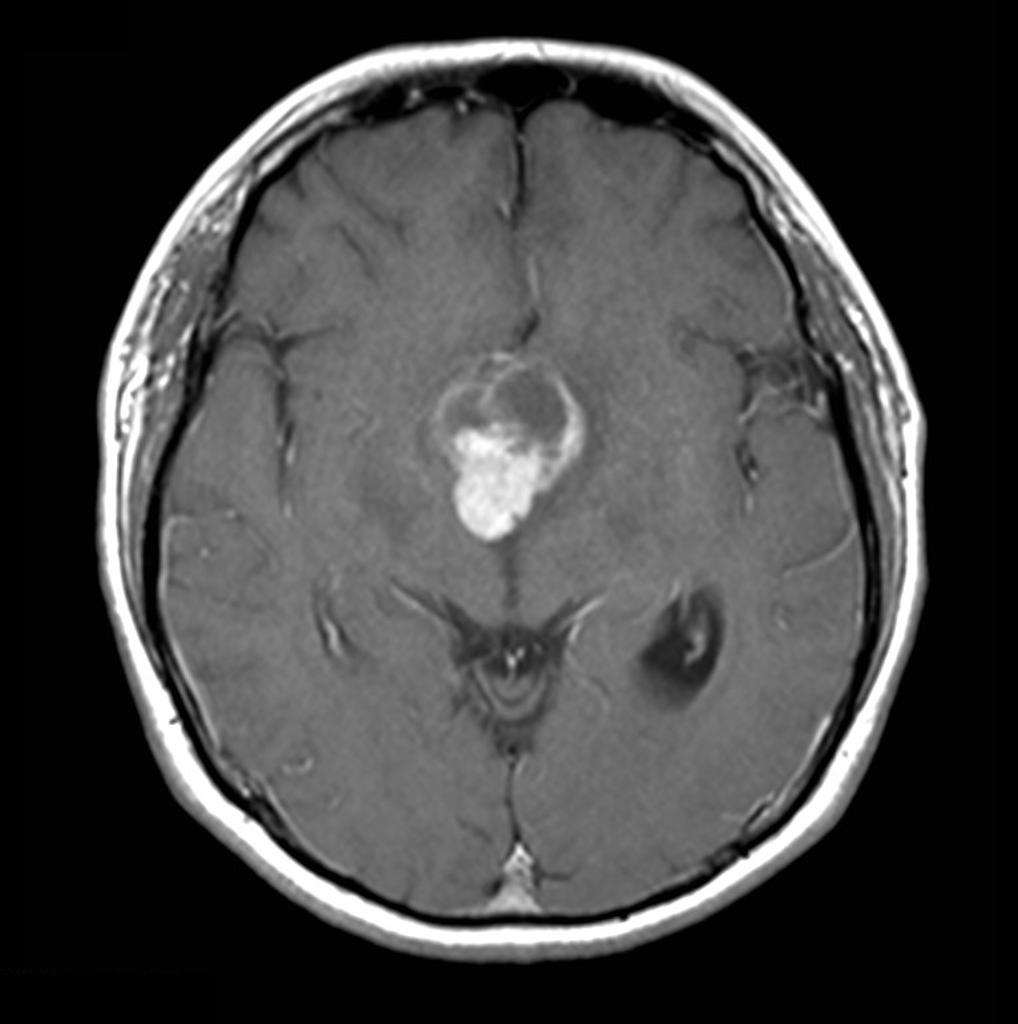 | ||
| Sarcoidosis |
|
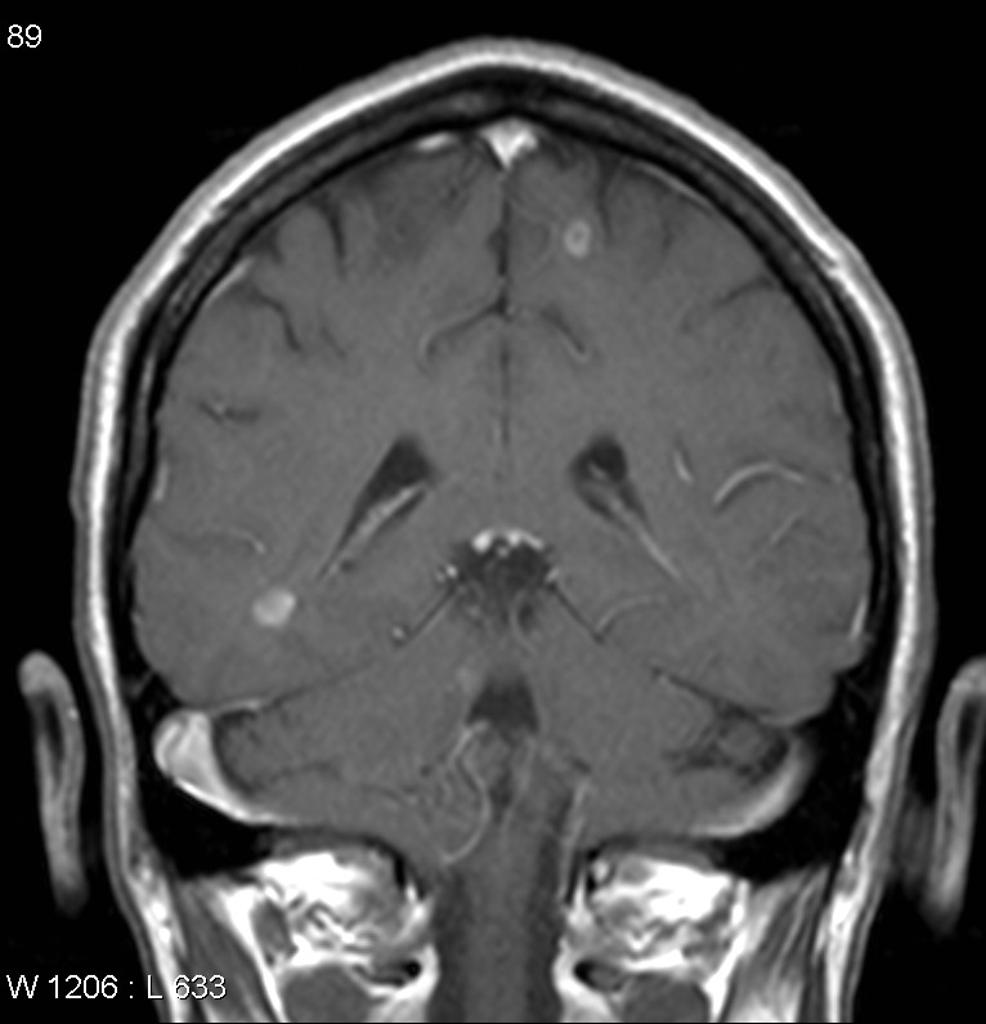 | ||
| Congenital | Hydrocephalus |
|
Dilated ventricles on CT and MRI
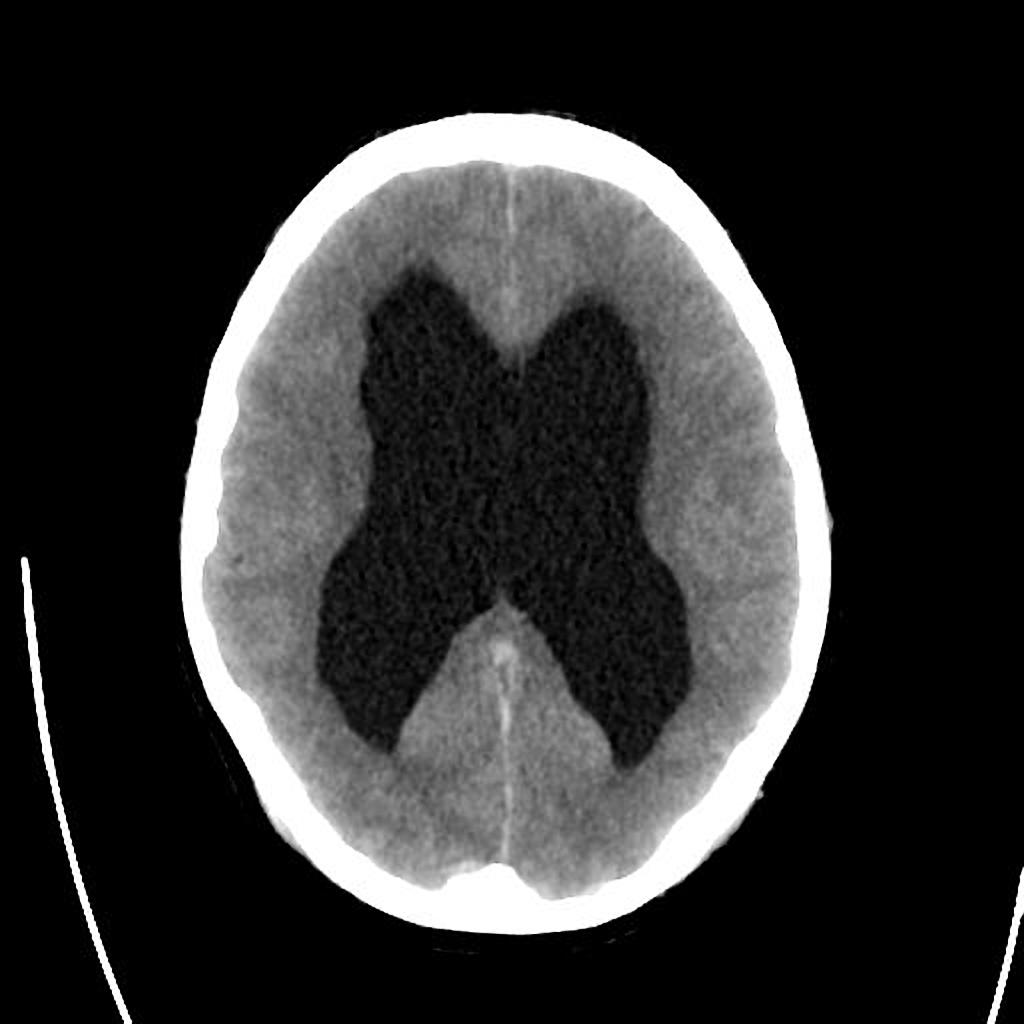 | |
| Wolfram Syndrome (DIDMOAD) |
| |||
| Nephrogenic | Acquired | Drug-induced (demeclocycline, lithium) |
| |
| Hypercalcemia |
| |||
| Hypokalemia |
| |||
| Multiple myeloma |
|
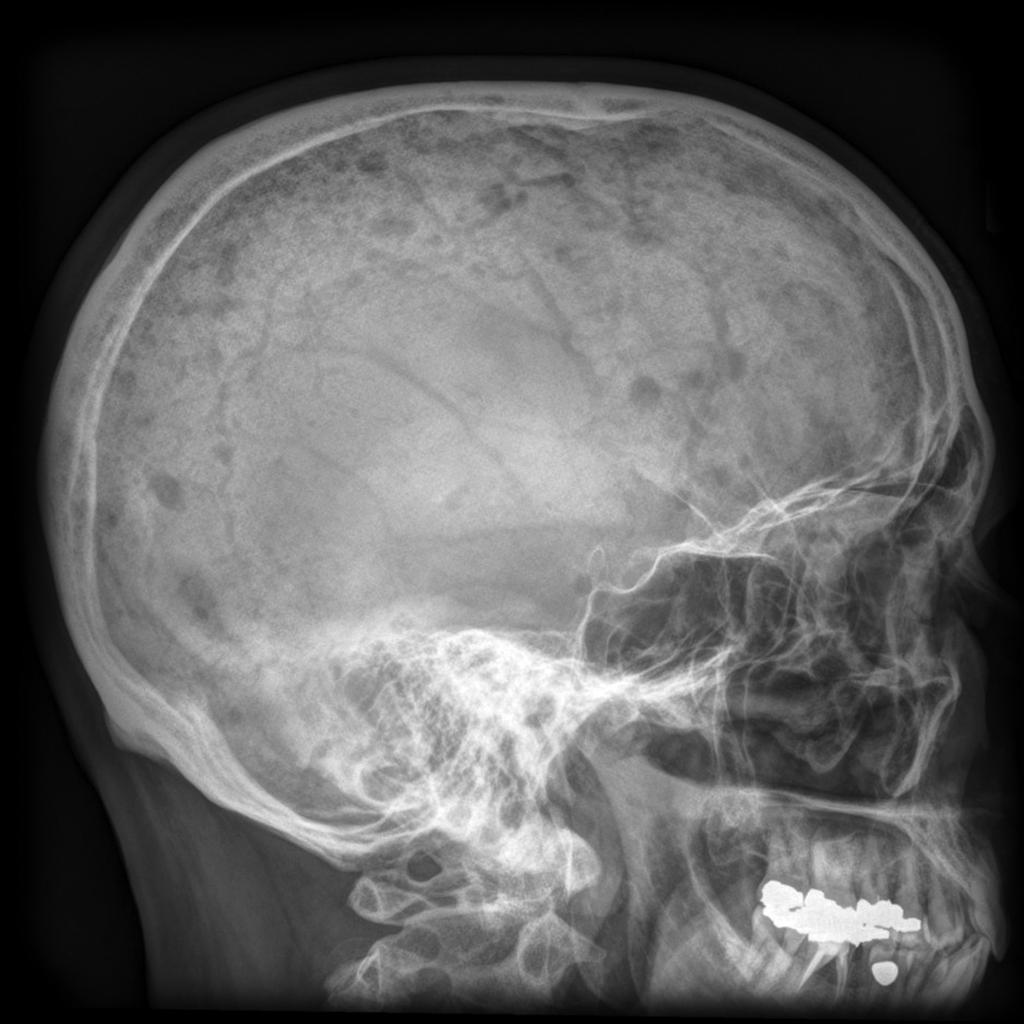 | ||
| Sickle cell disease |
|
 | ||
| Primary polydipsia | Psychogenic |
| ||
| Gestational diabetes insipidus |
| |||
| Diabetes mellitus |
| |||
References
- ↑ Differtials of Craniopharyngioma. Dr Henry Knipe and Dr Daryl Bergen et al. Radiopaedia. http://radiopaedia.org/articles/pituitary-region-masses-mnemonic-1
- ↑ Ghosh KN, Bhattacharya A (1992). "Gonotrophic nature of Phlebotomus argentipes (Diptera: Psychodidae) in the laboratory". Rev Inst Med Trop Sao Paulo. 34 (2): 181–2. PMID 1340034.